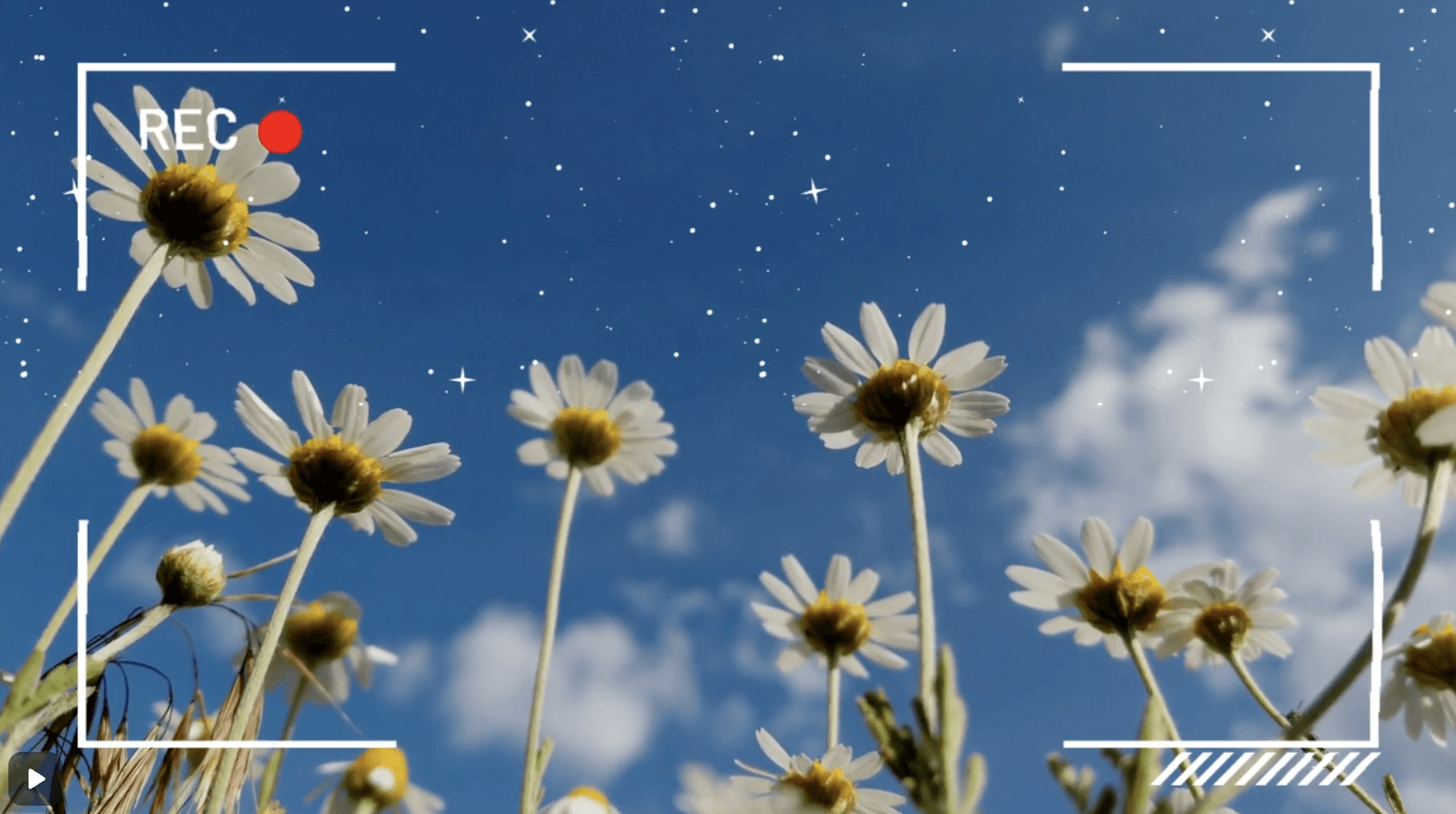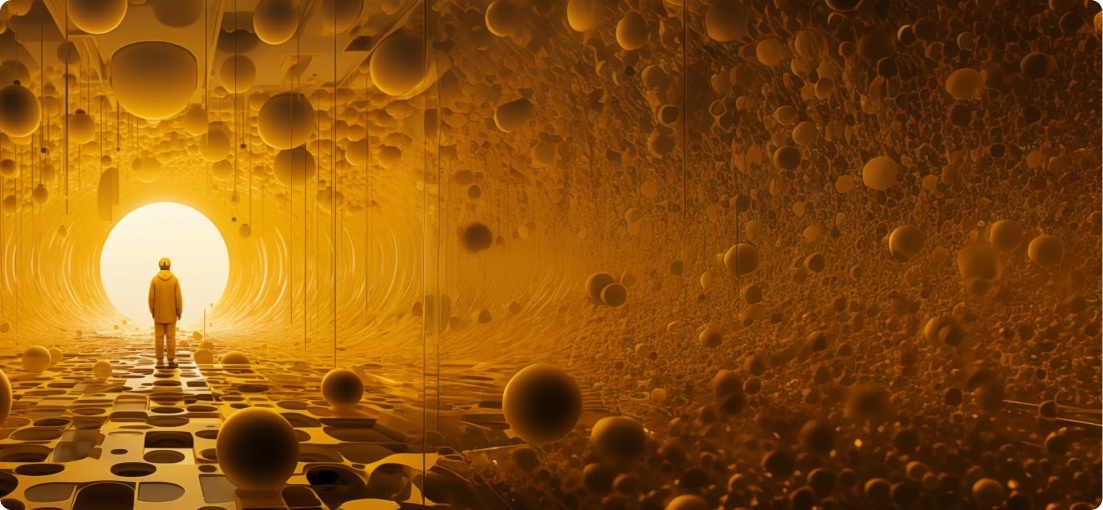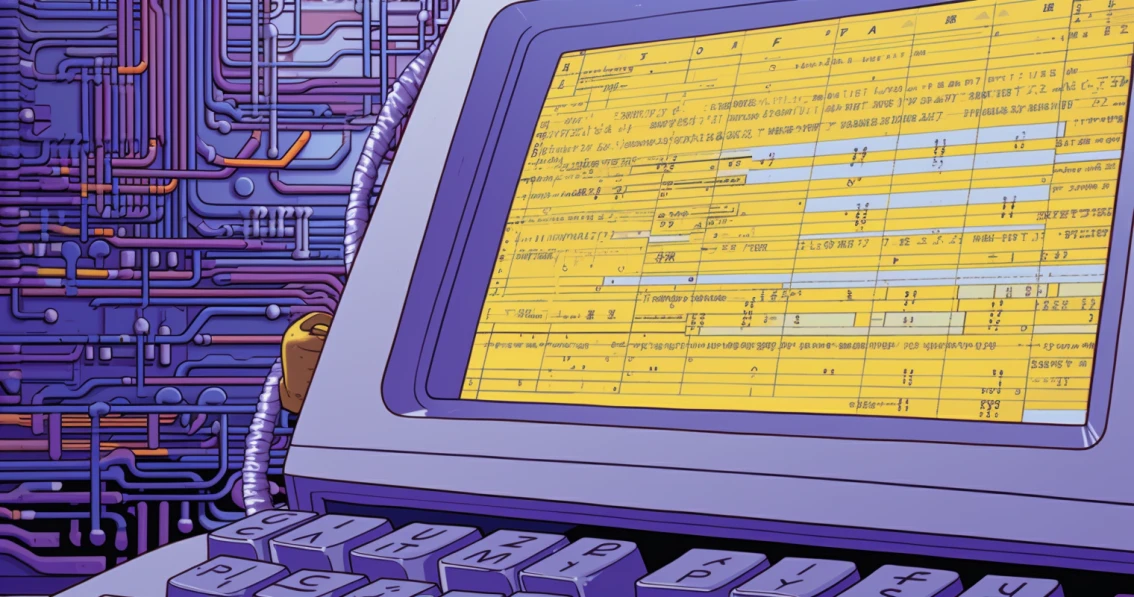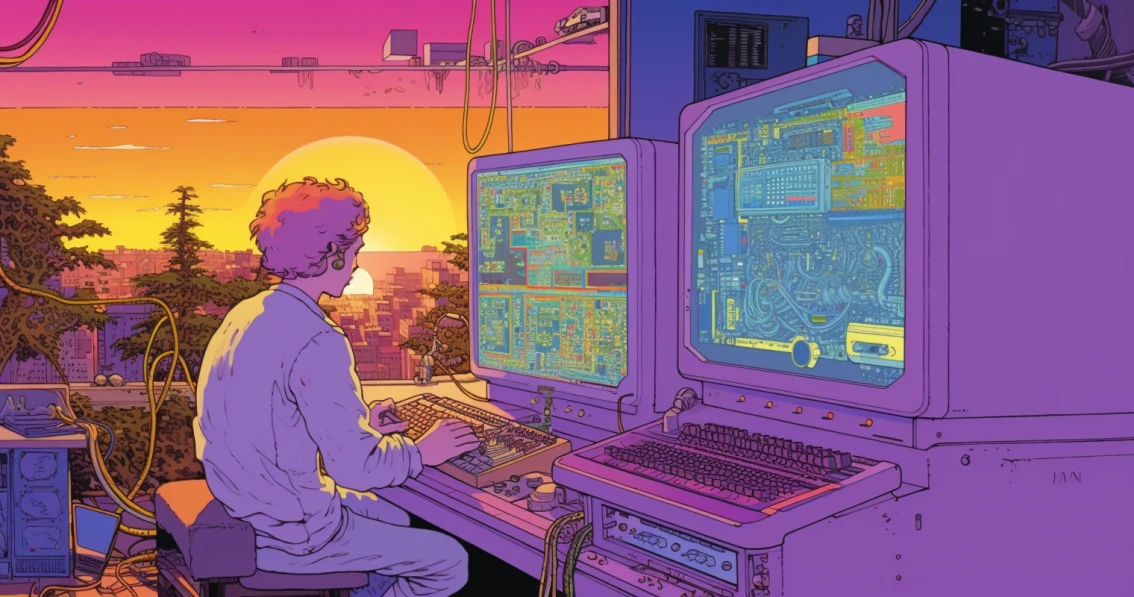Let’s be real – if you’re scrolling through your phone right now, odds are the first thing that grabs your attention isn’t a static image or a block of text.
It’s a video.
And you’re not alone.
In 2025, people are watching over 19 hours of online video each week on average – that’s double what it was just five years ago (Wyzowl, 2025). Whether it’s TikTok, YouTube Shorts, or a quick Instagram ad, video has become the way we consume content.
But here’s the thing – video isn’t just for entertainment anymore. It’s one of the most powerful tools businesses can use to connect with their audience. In fact, 92% of marketers say video gives them a good return on investment, and 88% say it helps them drive more sales (Wyzowl, 2025).
And when it comes to mobile advertising? Video completely dominates. Scroll through any social feed and you’ll see short, snappy videos selling everything from apps to skincare to online courses. Static images just can’t compete.
So if you’re thinking about running video ads – or want to finally figure out how this whole video production thing works – you’re in the right place.
In this guide, we’ll break it all down.
We’ll walk through what video production actually means, the different types of videos you can make, how to plan and shoot a video ad, and what makes one perform better than the rest.
Ready? Let’s get started.
What Is Video Production?
Alright, so what does video production actually mean?
In simple terms, it’s the whole process of creating a video – from coming up with the idea to shooting the footage to editing it all together. Think of it like building a house. You start with a blueprint (that’s your concept and script), gather your tools and team (camera, crew, actors), and then get to work putting everything together.
But when we’re talking about video ads, video production isn’t just about making something that looks cool. It’s about creating something that makes people stop scrolling, watch, and do something – whether that’s clicking a link, downloading an app, or buying a product.
So, it’s not just about how a video looks, but why it exists in the first place.

Why Video Production Matters in Advertising
Let’s talk numbers for a sec. People are watching more short-form video than ever before, and it’s changing the way we shop and make decisions.
Here’s the kicker: people retain 95% of a message when they watch it in a video, compared to just 10% when reading it in text (Insivia, 2024). That’s a massive difference.
And it’s not just about memory. Video ads on social platforms drive 48% more sales than image-based ads, according to a Meta study. That’s why brands big and small are doubling down on video content.
In short, if you’re not using video, you’re missing out on a massive opportunity to grab attention and convert it into results.
In the next section, we’ll look at the different types of video ads you can make (and which ones are worth your time).
Types of Video Production
There’s no one-size-fits-all when it comes to video ads. Different formats work better for different goals, platforms, and budgets.
Let’s break down the most popular types so you know what’s out there – and what might work best for you.
Brand Videos
Think of these as your intro handshake. Brand videos tell people who you are, what you stand for, and why they should care. They’re usually polished, emotional, and packed with storytelling. Great for building awareness and trust, especially at the top of the funnel.
Brand videos fall under the broader category of corporate videos, including internal training and onboarding videos.
Product Demos
These show your product in action.
Whether it’s an app, gadget, or online service, product demos walk viewers through key features and benefits. The goal here is clarity – make it super obvious how it works and why someone should want it.
Testimonials and Case Studies
Nothing builds trust like hearing from a happy customer. Testimonial videos feature real people sharing real results. They’re especially effective for B2B and higher-ticket items, where credibility matters a lot.
Explainer Videos
Explainer videos break down complex ideas in a simple way. They’re often animated or voice-over driven, and they work great for SaaS, fintech, or anything that needs a bit of context. If your product solves a problem, this is your chance to spell it out clearly.
You can hire explainer video agencies specializing in this stuff for quick results.
UGC-Style and Influencer Videos
These feel like something a friend might post – raw, personal, and unscripted. And that’s the magic. UGC (user-generated content) and influencer videos tend to perform better on mobile because they don’t look like ads. They look like real people talking about stuff they love.
Motion Graphics and Animation
Got an app, software, or anything techy? Motion graphics can make it pop.
These videos use animated elements, icons, and text to explain things visually. They’re sleek, eye-catching, and easy to customize.
The Video Production Process
Creating a video ad isn’t just about picking up a camera and hitting “record.” A great ad is the result of a clear plan, smart execution, and thoughtful editing.
Let’s walk through the three main phases of video production: pre-production, production, and post-production.
1. Pre-Production: The Planning Phase
This is where all the important decisions happen. Rushing this part is like trying to cook a meal without knowing what ingredients you need – it’s just asking for trouble.
Here’s what pre-production usually includes:
Concept & Goal Setting
Before anything else, ask: What’s the goal of this video ad? Is it to drive installs? Sell a product? Build awareness? Knowing your goal will shape everything that follows.
Example:
If you’re advertising a mobile game, your goal might be to drive installs. That means your video needs to show gameplay quickly, highlight fun features, and end with a strong CTA.
Scriptwriting
The script is your blueprint. It should be short, engaging, and structured. For ads, you want to hook people in the first 3 seconds, clearly explain the benefit, and end with a CTA.
Storyboarding (Optional, but Helpful)
This is like making a comic strip version of your ad. It helps you visualize the flow of scenes, especially helpful if you’re working with a team or animator.
Casting (if using actors or UGC creators)
Decide if you need talent, and what type. Are you hiring an actor? Using an influencer? Asking a customer to record a testimonial? Make sure they match the vibe of your brand.
Location Scouting
If you’re filming somewhere other than a studio, you need to find a space that looks good, is well-lit, and has minimal noise. If you’re on a budget, even a tidy, bright corner of your house can work.
Shot List and Production Plan
This is where you plan exactly what you’ll shoot and when. Include details like camera angles, props, and who’s needed on set. The more organized this list, the smoother your shoot day will go.

2. Production: Lights, Camera, Action
This is where you capture your raw footage. If pre-production was all about planning, production is about execution.
Here’s what to focus on during this phase:
Lighting
Good lighting can make a $100 video look like a $1,000 one. Natural light works great, but you can also use softbox lights or even a ring light. Avoid harsh shadows or overexposed windows.
Sound
If your video includes dialogue or voice, clean audio is a must. Use a lav mic or external recorder. Bad audio is one of the quickest ways to lose viewer trust, even more than shaky footage.
Framing and Composition
Keep your subject centered or use the “rule of thirds” for more professional-looking shots. Pay attention to the background – avoid anything distracting or messy.
Camera Movement
Use a tripod or stabilizer to keep things steady. Handheld can work for UGC-style videos, but don’t go overboard with movement unless it adds something to the shot.
Multiple Takes
Even if the first take looks good, do a few more. It gives you more to work with during editing, and can help you discover better versions of a line or scene.
Example:
If you’re filming a skincare demo ad, shoot close-ups of the product, wider shots of someone using it, and a few different angles for texture. These details make your video more dynamic in post.

3. Post-Production: Where the Magic Happens
Once the footage is shot, it’s time to bring it all together. This phase is all about shaping the raw material into something polished, professional, and effective.
Here’s what goes into post-production:
Editing the Footage
Trim clips, arrange them in the right order, and adjust timing. For video advertisements, aim for short and punchy – under 30 seconds is ideal for mobile platforms. Your goal is to keep viewers watching until the CTA.
Adding Motion Graphics & Text
Text overlays, subtitles, and animated elements help reinforce your message, especially since many people watch with the sound off. Keep it fast-paced and visually engaging.
Sound Design & Music
Use background music that fits your brand tone (fun, serious, upbeat, calm). Add sound effects if needed, but don’t overdo it. If your ad has voiceover, make sure it’s clear and doesn’t compete with the music.
Color Grading
Adjust brightness, contrast, and color tones to make your footage pop. A little tweaking can make even budget footage look polished and professional.
Platform-Specific Edits
Don’t forget to format your video for where it’ll run. Vertical (9:16) works best for TikTok, Reels, and Stories. Square or horizontal may be better for Facebook and YouTube.
Exporting the Final Video
Once everything looks good, export it in the right resolution and file format. Most platforms recommend MP4 in 1080p for best results.
At this point, your ad is ready to launch – but the process doesn’t stop there. After publishing, you’ll need to test, track performance, and tweak things based on what works.
How to Produce a Video Ad
So, you want to make a video ad that actually works, not just looks cool.
Good news: you don’t need a huge team or expensive gear to get results. What you do need is a clear process. Not a rigid checklist, but a smart series of moves that help you stay focused and creative at the same time.
Let’s walk through how to bring an ad to life from scratch.
Start With the End in Mind
What’s the one thing you want someone to do after watching your ad?
This might sound obvious, but a lot of weak video ads fail here. They’re “nice to watch” but go nowhere. Before you write a single word of script, get clear on your outcome. Drive app installs? Get people to check out your landing page? Collect leads?
Your goal decides everything: how long the ad should be, what message leads, even what platform to run it on.
No goal = no direction.
Write a Script That Sounds Like a Real Person
Scripts don’t need to be fancy. But they do need to feel human.
You’re not writing a movie. You’re trying to hold attention from someone who’s halfway through their morning coffee and about to skip your ad in 2 seconds.
So talk like a real person. Cut the fluff. Get to the point.
Here’s a simple structure that works:
- Hook – Grab attention right away. A bold statement, question, or unexpected visual. This is your scroll-stopper.
- Middle – Show the value. Solve a problem. Highlight a benefit. Keep it moving fast.
- CTA – Tell people what to do next. Make it super clear.
That’s it. Simple doesn’t mean boring – it means focused. Some of the best-performing ads are just 20-second UGC clips that follow this structure.
Choose the Right Format (Not the Flashiest One)
This part trips a lot of people up. They think they need a full-blown commercial with actors and voiceover. But the truth is, your format depends on your message, not your budget.
Some questions to help decide:
- Is this a tutorial or demo? A screen recording with voiceover might be perfect.
- Are you promoting a physical product? Maybe live-action or UGC with someone unboxing and using it.
- Need to simplify a complex idea? Try animation or motion graphics.
Don’t overthink it. Pick the format that tells your story best – and matches where you’ll run the ad. (Vertical and casual for TikTok. Polished and clean for YouTube.)

Capture or Collect Your Footage
If you’re filming your own footage, focus on the basics: light, sound, and framing. You’d be surprised how professional a video looks with just a phone, natural light from a window, and a $20 mic.
But you don’t have to shoot anything yourself.
You can use:
- UGC from creators
- Clips from a platform like Pexels or Artgrid
- Old footage from your own library
- Product photos turned into motion graphics
The key is matching the vibe of the ad. Clean and minimal? Bright and playful? Make sure the footage reflects your tone.
Edit for Attention (Not Perfection)
This is where it all comes together – or falls flat.
Good editing isn’t about showing off your transitions. It’s about pacing, clarity, and impact. Keep it tight. Cut out every second that doesn’t earn its spot.
Use bold text overlays to highlight key lines. Add sound effects and music to keep the rhythm moving. Use zooms, crops, or punch-ins to draw focus to reactions or features.
And don’t forget: most people are watching with no sound. Your edit needs to make sense even if muted.
Make It Platform-Ready
Finally, shape your ad to fit where it’s going.
For mobile-first platforms like TikTok, Instagram, and YouTube Shorts:
- Go vertical (9:16)
- Keep it short (15–30 seconds is ideal)
- Start fast, no intros or logos up front
For placements like Facebook Feed or YouTube pre-rolls:
- You can go horizontal or square
- Slightly longer length is okay (30–60 seconds)
- Include branding earlier
Each platform has different norms. But across all of them, the rule is the same: respect the viewer’s time and attention.
Elements of a High-Converting Video Ad
A video ad can look amazing and still flop.
Because good design doesn’t always mean good performance, especially in a fast-moving feed where people are watching on mute, skipping ads, or juggling five other things at once.
So what actually makes a video ad work? Here are the key ingredients that top-performing ads tend to have in common.

1. A Killer Hook (First 3 Seconds Matter Most)
This is the make-or-break moment. If your opening doesn’t grab attention instantly, everything that follows might as well not exist.
A good hook creates curiosity or emotion right away. It might be:
- A bold visual (think: a surprising reaction or zoomed-in action)
- A powerful question (“Tired of paying for stuff you don’t use?”)
- A jarring or relatable statement (“I wasted $500 on this app…”)
Whatever it is, it should feel immediate. No intros. No slow builds. You’ve got three seconds. Use them well.
2. Clear, Obvious Value
Once you’ve got their attention, your next job is to answer: What’s in it for me?
This doesn’t mean listing product features. It means showing or saying something that directly benefits the viewer.
Not:
“This app tracks your spending.”
Better:
“Save $300/month without changing your lifestyle.”
The value should feel instant and easy to understand. Bonus points if it solves a pain point people already know they have.
3. Emotion or Entertainment (Yes, Even in Ads)
People remember how you made them feel.
So even if you’re selling a dry product – insurance, software, whatever – inject some kind of emotional hook.
This could be humor, surprise, empathy, or even a bit of drama. And if emotion feels like a stretch, go for entertainment. Movement, energy, quirky delivery… anything that keeps eyeballs glued to the screen.
UGC creators are great at this. They turn simple scripts into stories with personality. That’s why their videos often outperform “professional” ads.
4. Designed for Silent Viewing
Let’s be honest – most people aren’t turning the sound on for your ad. And if your message only works with audio, you’re missing half your audience.
That means:
- Use captions or bold on-screen text
- Communicate through visuals (demonstrations, gestures, close-ups)
- Make sure nothing important is said only in voiceover
Your ad should still make perfect sense with the volume off.
5. A Strong, Natural CTA
Last but definitely not least: tell people what to do next.
“Shop Now”
“Download Free”
“Try It Today”
But here’s the trick – your CTA should feel like the natural next step, not a sudden shout. If you’ve done your job right, they’re already convinced. You’re just pointing them in the right direction.
Try making it more conversational:
- “Want to see how it works? Try it here.”
- “Takes 30 seconds to get started.”
Soft CTAs often work better than pushy ones. It’s like nudging, not yelling.
These elements don’t guarantee success, but they dramatically increase your odds of someone watching all the way through – and actually taking action.
Next up: we’ll go over some real-world tips for improving performance, from A/B testing to editing tricks that keep your cost-per-click low.
Tips for Better Ad Performance
Making a video ad is one thing. Making a video ad that actually gets results – that’s the real challenge.
Even the best-looking ad won’t perform well if it’s too slow, too long, or too confusing. And sometimes, the most unexpected edits turn out to be your top performers.
Here’s how to boost your video ad’s performance without guessing your way through it.

Test, Test, Test (Then Test Again)
Don’t fall in love with one version of your ad.
The top brands aren’t running a single creative – they’re running dozens of variations. Sometimes the only difference is the first 3 seconds, a different line delivery, or a new hook.
Try changing up:
- The opening line
- Thumbnail (for platforms that show one)
- Music
- Visual order (starting with a reaction shot instead of the product)
You’ll often find that small changes lead to big performance differences.
And here’s the best part: you don’t have to guess. Most ad platforms (like Meta, TikTok, or Google) will show you what’s working, so let the data lead the way.
Shorter Is (Usually) Better
Attention spans are short. On mobile, they’re very short.
While long-form storytelling has its place, ads under 30 seconds almost always outperform longer ones on platforms like TikTok, Reels, and Meta. Some of the best UGC ads are 15 seconds or less, and they get straight to the point.
Think of every extra second as something the viewer has to “earn.” If it’s not adding value, cut it.
Design for Scroll-Stopping
Your video competes with everything else in someone’s feed – dog videos, memes, messages from friends.
So you need scroll-stopping moments, and you need them early.
Try:
- Starting with a reaction shot instead of the product
- Using a pattern interrupt (something that visually surprises)
- Bold, oversized text right at the start
The first few frames should feel fast, punchy, and different. You want someone to pause for just long enough to get hooked.
Use Movement to Hold Attention
Motion is your secret weapon. It keeps the eye engaged and signals energy.
That doesn’t mean wild transitions every two seconds. Even subtle movement helps – like text that slides on screen, slow zooms, or a quick camera pan.
When editing, ask: Is something moving or changing every 2–3 seconds? If not, it’s probably too static.
Let the First Line Do the Heavy Lifting
We talked about hooks earlier, but it’s worth repeating: your first line matters more than your middle.
This is true whether it’s spoken, written on screen, or both.
Examples that work:
- “I didn’t think this would work…”
- “Here’s how I save $200 a month with zero effort.”
- “This app is weirdly addicting.”
If your ad starts with “Introducing our new product,” it’s already lost.

Cut Ruthlessly
This is one of the hardest parts – but it’s crucial.
Don’t keep shots just because you like them. Keep only what moves the ad forward. Anything that drags, distracts, or repeats? Cut it.
A 40-second ad with 10 great seconds hidden in the middle is still a 40-second ad no one finishes.
So trim the fat. Then trim again.
Video Production Tools You Can Use
You don’t need a studio full of gear or a $5,000-a-month editing suite to make high-performing ads. These days, you can produce solid video content with just your phone, a few smart tools, and a little creativity.
Here’s a quick breakdown of tools you can use at each stage of production – from writing your script to hitting “export.”
Scripting & Planning
ChatGPT
It’s a great way to brainstorm hooks, write first drafts, or test different CTAs quickly.
Google Docs
Nothing fancy here, just a reliable place to draft, share, and tweak your script. Great for collaboration.
Notion
If you’re planning multiple ads or campaigns, Notion works well for organizing everything – from briefs to shot lists.
Shooting
Your Phone (Seriously)
Most newer iPhones and Androids shoot crisp 4K video. Just use natural light and stabilize your shot.
Rode Wireless Go or Lavalier Mic
Clear audio makes a huge difference. These plug-and-play mics are small, portable, and great for voice or talking head videos.
Ulanzi or Joby Tripod
Affordable, flexible tripods that work with phones or cameras. Great for hands-free shooting.
Softbox Lights or Ring Lights
If you’re shooting indoors or at night, a bit of lighting goes a long way. Ring lights are great for UGC-style videos and testimonials.
Editing
CapCut
This one’s a favorite for TikTok-style and UGC-style editing. It’s fast, mobile-friendly, and has tons of built-in effects and templates.
Adobe Premiere Pro
If you want more control and precision, Premiere is the gold standard for professional editing. Takes a bit more time to learn, but it’s super powerful.
Final Cut Pro
Only for Mac users, but it’s faster and more beginner-friendly than Premiere. Also great for YouTubers and product demos.
DaVinci Resolve
Free, high-end software with amazing color grading tools. Slight learning curve, but it’s packed with features.
Graphics, Text & Animation
Canva (Pro)
Use it for adding text, animated overlays, branded intros, and outros. It’s also good for creating thumbnails or end cards.
After Effects
If you want custom motion graphics, slick transitions, or animated text, this is the go-to – though it’s definitely more advanced.
LottieFiles
Use pre-made animations and export them into your edits or motion graphic overlays. Saves time if you’re not an animator.
UGC Collection & Creator Platforms
Billo, Minisocial, Trend.io
Want creators to make UGC-style ads for you? These platforms connect you with people who know how to film content that doesn’t feel like an ad, but sells like one.
Fiverr/Upwork
You can also find affordable editors, voiceover artists, and animators here. Just vet carefully and always ask for samples.

Video Production for Different Platforms
One of the biggest mistakes people make with video ads? Creating one version and posting it everywhere.
Different platforms have different vibes, formats, and user behaviors. A video that crushes on TikTok might totally flop on Facebook. And a YouTube pre-roll? That’s a different beast altogether.
Here’s how to adjust your videos so they work with each platform, not against it.
TikTok & Instagram Reels
TikTok and Instagram love the same kind of content: fast, casual, and vertical.
- Format: 9:16 vertical
- Length: 15–30 seconds max
- Style: Raw, authentic, often UGC-style. Overly polished can feel like an ad – and that’s a scroll trigger.
- Hook fast: You’ve got 1–2 seconds to grab attention.
- Sound on: Music trends matter, but don’t rely on sound alone – use captions and bold text.
📌 Pro tip: Trends move fast. Use trending sounds, hashtags, or visual styles if it fits your brand, but don’t force it.
Facebook & Instagram Feed
These platforms can handle a mix of styles – from native-looking UGC to polished explainer ads.
- Format: Square (1:1) or vertical (4:5)
- Length: 15–45 seconds is ideal
- Style: Feels less chaotic than TikTok. You can slow the pace slightly and focus on benefits.
- Captions: Always include them. A huge chunk of viewers scroll with sound off.
- First 3 seconds: Still critical. Start with a visual or line that feels relatable.
📌 Pro tip: Don’t waste the first few seconds with your logo. Lead with value, not branding.
YouTube (In-Stream & Shorts)
YouTube is where people expect longer content, but with ads, they still want you to get to the point fast.</p></p>
YouTube Shorts
- Format: Vertical (9:16)
- Length: Under 60 seconds
- Vibe: Similar to TikTok and Reels – short, engaging, and native-looking.
In-Stream (Skippable Ads)
- Format: Horizontal (16:9)
- Length: Up to 60 seconds, but your first 5 seconds matter most – that’s when people decide to skip.
- Structure: Start with your best hook or most surprising visual. Introduce your value early, and CTA by the 25-second mark.
- Sound: Viewers expect sound here, but still include on-screen text for clarity.
📌 Pro tip: Don’t save your punchline for the end – most people won’t see it. Lead with impact.
Snapchat
Quick, high-energy, vertical videos thrive here. Think motion, bold text, and fast cuts.
- Format: 9:16 vertical
- Length: 3–10 seconds is the sweet spot
- Style: Bright, snappy, and visually stimulating
- Voiceovers & Music: Use both, but make sure visuals still work if muted
📌 Pro tip: You’re competing with selfies, not Netflix. Ads should feel like native content, not interrupt it.
Programmatic & CTV (Connected TV)
These placements are more traditional, but still need sharp creative.
- Format: Usually horizontal (16:9)
- Length: 15–30 seconds
- Style: Cleaner, more brand-forward. Think polished motion graphics or cinematic shots.
- Pacing: You can slow it down slightly, but still keep it tight. These are lean-back viewers, but they still need a reason to care.
📌 Pro tip: Include branding early. These placements often don’t have a clickable CTA, so brand recognition is key.

Working with a Video Production Agency
Producing video ads in-house sounds great – until you’re knee-deep in scripts, edits, reshoots, and platform specs. It takes time, tools, and a lot of trial and error.
That’s why many brands team up with a video production agency.
A good agency helps you move faster, avoid creative burnout, and get ads that actually convert. You’re not guessing what might work – they already know what’s working across TikTok, Meta, YouTube, and beyond.
At Udonis, we’ve helped top mobile games and apps scale video ad production – without sacrificing speed or performance. Whether it’s UGC-style content or a full video series, we plug into your goals and help you grow.
If you’re ready to scale your video ads without adding more to your plate, we’d love to chat.
Final Thoughts on Video Production
Video production doesn’t have to be overwhelming.
Whether you’re filming with your phone or working with a full team, the same core principles apply: start with a clear goal, hook your audience early, and keep it focused. The best video ads aren’t always the flashiest – they’re the ones that connect quickly and drive action.
Now that you’ve got a handle on the process, tools, and strategies, you’re in a solid spot to start creating video ads that actually perform, not just fill up your feed.
And if you ever feel stuck or want to move faster, don’t hesitate to get help. Producing high-quality creative consistently is a lot to juggle alone, and you don’t have to.
We’re here if you need a partner who gets performance.





![Mobile App Market Growth, Size, and Share [2025 Report]](/static/231d355e4558e7604b3988968bd48b56/0ccb9/mobile-app-market.png)

Comments